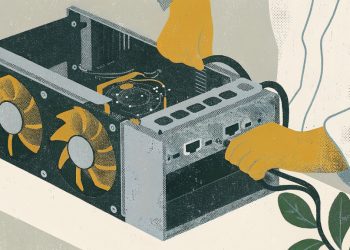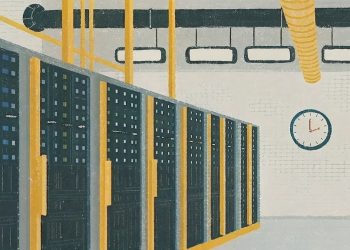
A Step-by-Step Guide for Beginners to Understand
Bitcoin mining is the process by which new bitcoins are created and transactions are confirmed on the Bitcoin network. It’s a fascinating mix of technology, mathematics, and economics that powers the world’s first and most popular cryptocurrency.
1. What Does Bitcoin Mining Mean?
Mining bitcoins means using computers to solve tricky math problems that keep the Bitcoin network working correctly. Think of it like a digital gold rush where miners race to find the solution to puzzles. When they do, they add a new “block” of transactions to the Bitcoin “blockchain,” the official list of all Bitcoin activity.
- Block: A group of Bitcoin transactions bundled together.
- Blockchain: A chain of blocks that stores all Bitcoin transactions in order.
Mining also creates new bitcoins as a reward. This reward encourages people to run the computers needed to keep the system safe and running.
2. What Hardware Is Needed for Mining?
Mining requires special computers called ASICs (Application-Specific Integrated Circuits). These machines are built only to mine Bitcoin and do it much faster than normal computers.
You will need:
- ASIC Miner: The machine that does the mining work.
- Power Supply Unit: A device that provides affordable electricity to the miner.
- Cooling System: Fans or water cooling to keep the machines from overheating.
- Mining Frame: A rack or casing to hold your machines safely with enough airflow.
You cannot mine Bitcoin efficiently with a regular computer or smartphone anymore because it’s too slow compared to ASICs.
3. Mining Software: The Program That Drives the Miner
Once you have your mining machine, you’ll need mining software. This software connects your machine to the Bitcoin network and helps it try solving the puzzles.
What are these puzzles? Bitcoin mining puzzles are like guessing the right combination to a digital lock. Miners try different numbers, called nonces, combined with transaction data, and run them through a cryptographic process called SHA-256 to create a unique code called a hash. The goal is to find a hash that starts with a certain number of zeros, a very rare and difficult feat. This involves countless guesses using powerful computers. When a miner finds this special hash, it proves they did the hard work (“proof of work”), allowing them to add a new block to the blockchain and earn bitcoins as a reward. This puzzle-solving keeps the Bitcoin network secure and trustworthy.
What is a hash? A hash is a unique digital fingerprint created by a mathematical process called a hash function. It takes any data, like a file or a group of Bitcoin transactions, and turns it into a fixed-length string of letters and numbers. Even the smallest change in the original data creates a completely different hash, making it easy to detect if something has been altered. In Bitcoin mining, hashes are used to securely identify blocks of transactions and ensure they haven’t been tampered with, keeping the entire system trustworthy and safe.
Some easy-to-use programs for doing this are CGMiner and EasyMiner. They allow your computer to communicate and work together with other miners.
4. What Is a Mining Pool and Why Join One?
Mining “puzzles” is very hard and solving one on your own can take a long time. That’s why many miners join a mining pool, which is a group of miners who combine their computer power.
When the pool finds a solution, everyone shares the bitcoin reward based on how much computer power each miner contributed. This means smaller miners get more regular payments instead of waiting a long time to solve a block by themselves.
5. Bitcoin Wallet: Your Bitcoin Bank Account
Before you start mining, you need a Bitcoin wallet. This is a digital place to store your Bitcoins and make payments.
There are three main types:
- Software Wallets: Apps on your phone or computer, like Electrum.
- Hardware Wallets: Physical devices, like Ledger, that keep your bitcoins safer.
- Web Wallets: Online services that store your Bitcoins but carry risk if the website gets hacked.
You will use your wallet’s “address” (like an account number) to receive your mining rewards.
6. Starting to Mine: What Actually Happens
When you start mining:
- Your ASIC miner turns on and connects to the mining software.
- Your computer starts guessing numbers (called nonces) to solve those cryptographic puzzles.
- The goal is to find a hash lower than a target number (the hash is that special code made by changing information into a short string of letters and numbers to keep it safe).
Solving a puzzle confirms transactions and adds a block to the blockchain. The entire process takes about 10 minutes per block on average.
7. Mining Rewards: How Miners Get Paid
Miners earn two types of payments for their work:
- Block reward: New Bitcoins given to the miner who solves the puzzle.
- Transaction fees: Fees paid by users sending Bitcoins, collected by the miner adding the block.
Currently in 2025, miners get 6.25 Bitcoins per block, but this reward halves every four years in an event called “halving,” which keeps Bitcoin’s supply limited and rare.
8. What Is Mining Difficulty and Hash Rate?
- Mining difficulty is a number that adjusts how hard it is to solve the puzzles. The mining difficulty rate in Bitcoin is automatically adjusted by the Bitcoin network every 2,016 blocks (about every two weeks) based on how quickly the previous blocks were mined. So if blocks are being found faster than the 10-minute target, the difficulty increases, and if slower, it decreases, ensuring a stable and predictable block production time. This keeps new blocks coming roughly every 10 minutes no matter how many miners join.
- Hash rate means how many guesses your miner can make every second. More power = higher hash rate = better chances of solving the puzzle.
Mining difficulty rises as more miners join because the system wants to keep block times stable.
9. Keeping Your Mining Operation Efficient
Good miners regularly check these things:
- Hash rate: Make sure your miner is working at full speed.
- Electricity use: Mining uses a lot of power, so cheaper electricity means higher profits.
- Temperature: Keep your machines cool to avoid damage.
- Pool performance: Check how much your pool rewards and how often.
By tuning settings and choosing the right pool, miners can improve how much Bitcoin they earn.
10. Energy Use and Costs in Mining
Mining needs a lot of electricity, which has sparked concern about its environmental impact. Many miners try to use renewable energy or set up in places where power is cheaper and cleaner. You should think about these costs because they directly affect how much profit you can make.
11. Why Mining Matters to Bitcoin
Mining doesn’t just create Bitcoins, it also:
- Confirms that transactions are real and safe.
- Keeps the Bitcoin system decentralized so no single company or person controls it.
Without miners, Bitcoin wouldn’t work as a trustless system, meaning people wouldn’t be able to rely on each other without a middleman. Bitcoin is called a “trustless” system because it allows transactions to occur directly between parties without trusting each other or any intermediary; instead, trust is placed in the system’s code, cryptographic proof, and decentralized consensus mechanisms that ensure security, transparency, and validity of transactions.
12. Challenges New Miners May Face
If you’re new, watch out for:
- The high upfront cost for hardware.
- Learning how to set everything up and run it.
- Risk that Bitcoin prices or mining difficulty change.
- Keeping mining software updated.
Being aware of these issues helps avoid surprises and keeps mining enjoyable.
13. Mining Options Besides Running Hardware
If you don’t want to buy expensive machines, you can also:
- Use cloud mining, where you pay someone else to mine for you remotely.
- Join mining cooperatives that share costs.
- Mine other cryptocurrencies that require less powerful hardware.
These paths are simpler but can be riskier or less profitable.
By constantly working behind the scenes, Bitcoin miners keep the network safe, decentralized, and always fresh with new coins, making sure everyone can trust and use it easily.















